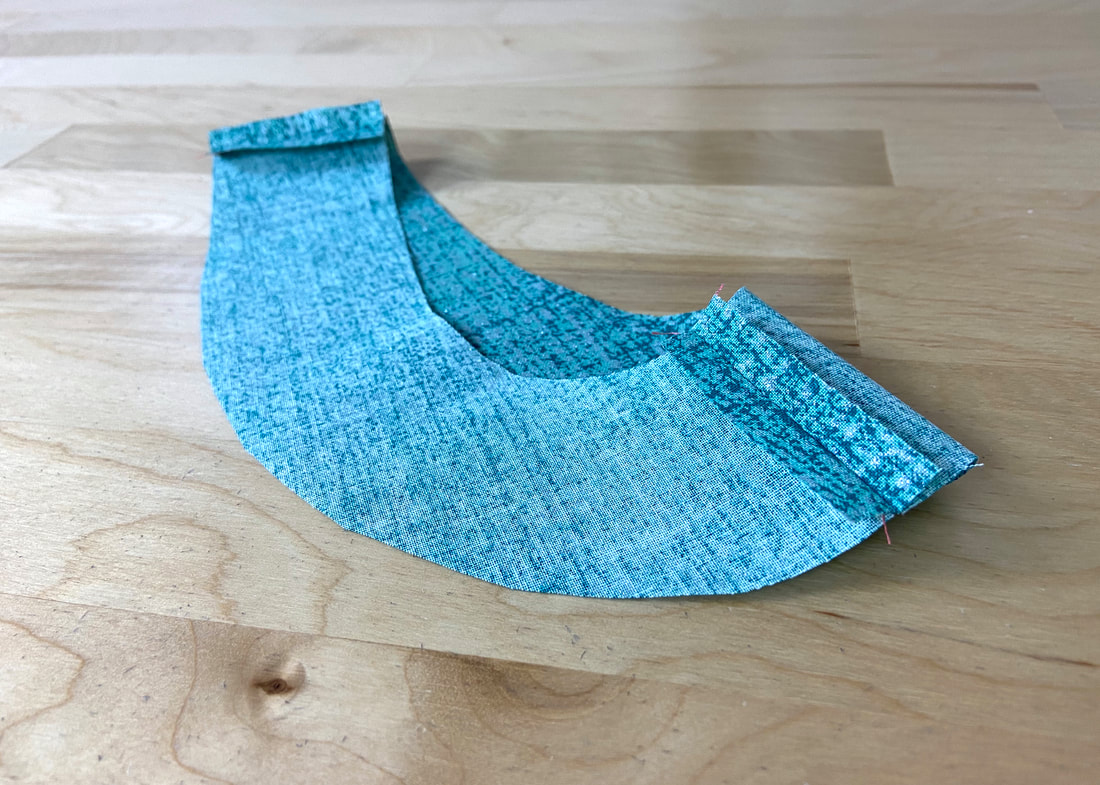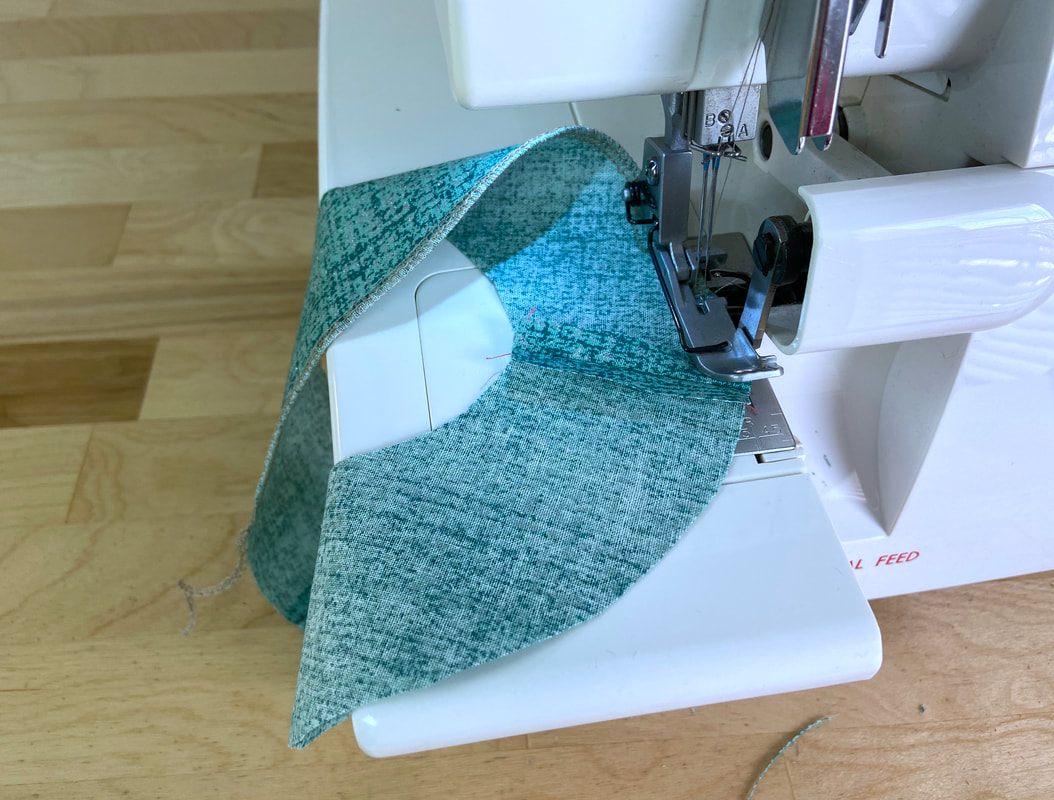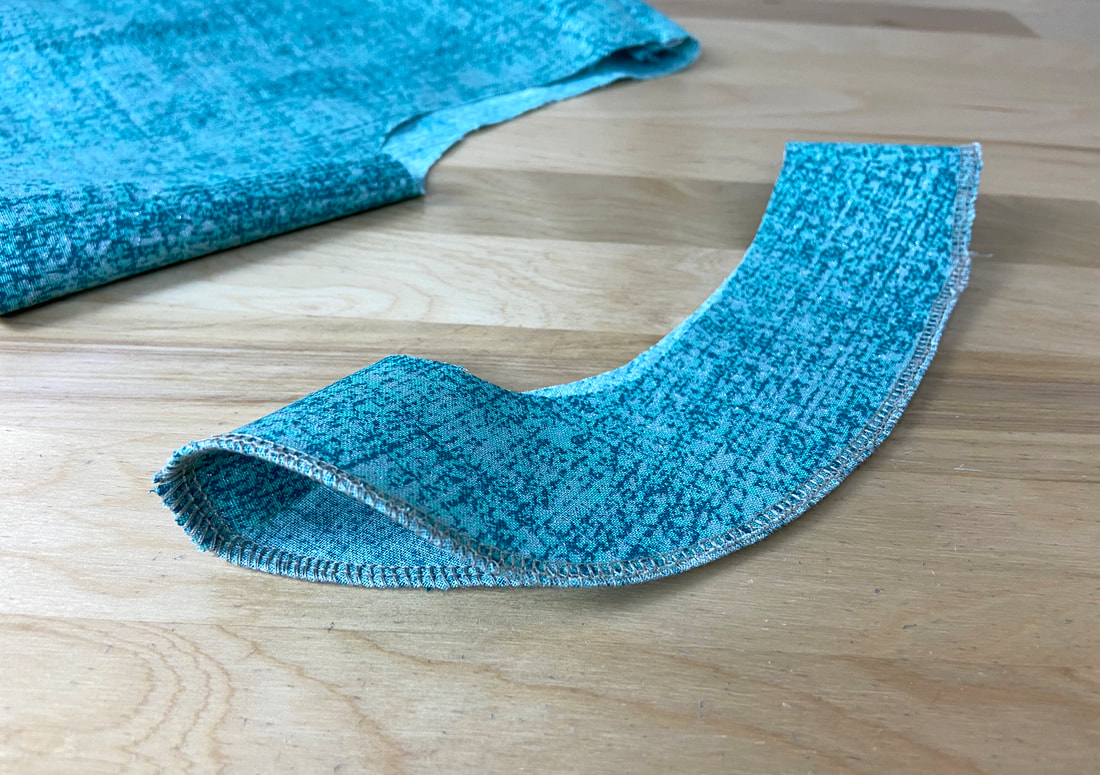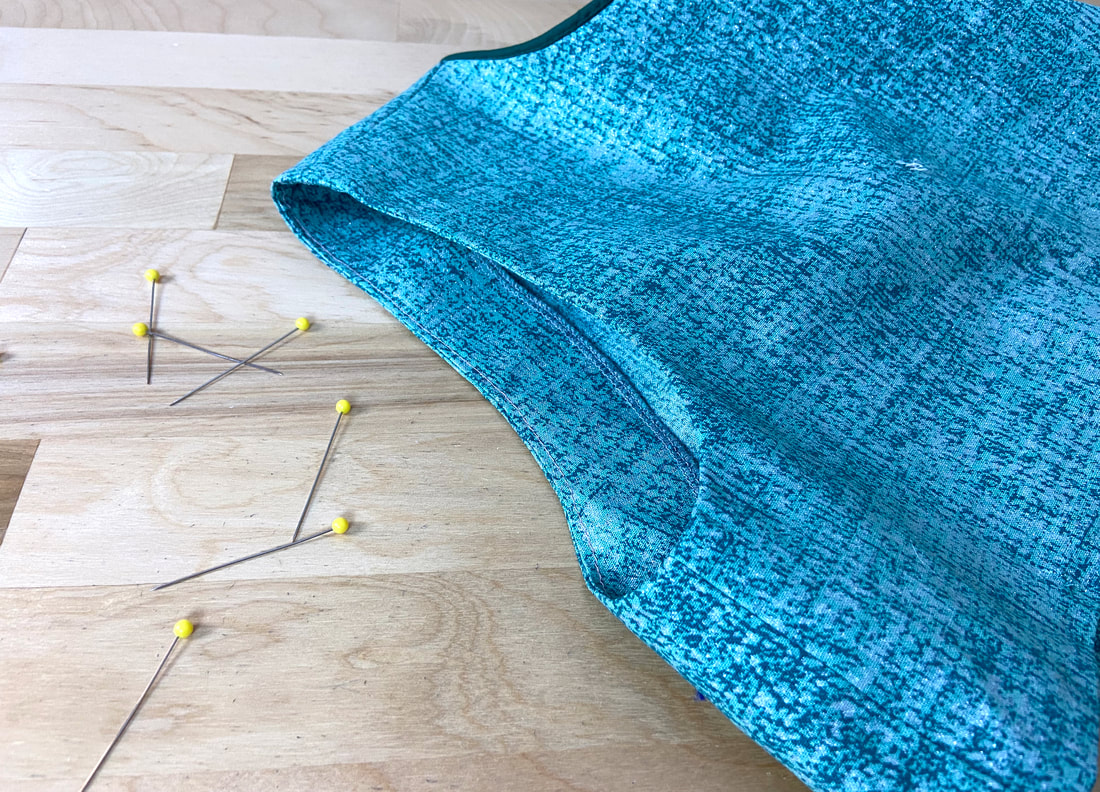Sewing Tip: Finish Facing Edges Before Attaching Them To The Garment
In the dressmaking process, a facing compartment is constructed first, then attached to the garment edge it finishes. The inner, shorter edge is always stitched to the garment's raw edge, while the outer, usually longer edge, corresponds to the inside of the garment and should lay flat against its surface.
Prior to attaching the facing layer, but after its seams have been stitched and ironed flat, it it helpful to clean-finish the facing's outer edge using the technique of your choice. Keep in mind that the finishing technique you choose should not add bulk, tension and excess thickness to the finished garment.
Prior to attaching the facing layer, but after its seams have been stitched and ironed flat, it it helpful to clean-finish the facing's outer edge using the technique of your choice. Keep in mind that the finishing technique you choose should not add bulk, tension and excess thickness to the finished garment.
Encasing this raw edge with an overedge stitch like serging or zigzag (applied on your home sewing machine) is perhaps the simplest, fastest and most effective way to clean-finish facing edges. In addition, this technique keeps the finished edge smooth and flat without adding unnecessary bulk and thickness.
It is simply easier and more convenient to clean-finish a facing's outer edge prior to attaching the facing unit to the garment since you won't have to manage the rest of the garment during this process. This is especially true if working with a heavier clothing item or bulky fabrics.





